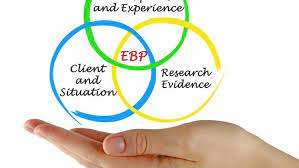NURS-FPX4030 Assessment 4 Remote Collaboration and Evidence-Based Care Example Paper
Hello everyone, and welcome to my presentation. My name is (insert name here). In this presentation, I will use Caitlyn Bergan’s scenario to emphasize the importance of implementing evidence-based practice and encouraging remote collaboration in promoting care quality for patients in remote settings.
Before delving into an in-depth analysis of the case study, it is valid to argue that the Vila health scenario underscores the importance of interdisciplinary collaboration between healthcare professionals, patients, and families in ensuring effective utilization of telemedicine technologies when physical distance is a fundamental factor for quality care delivery. This presentation will explain an evidence-based care plan for Caitlyn while emphasizing the role of interdisciplinary collaboration in promoting telehealth technologies.
Evidence-Based Care Plan

Caitlyn Bergan’s scenario presents various challenges when delivering care for patients with cystic fibrosis in remote settings. Although healthcare professionals at the Valley City Regional Hospital embrace interdisciplinary collaboration to ensure an effective transition for Caitlyn, they are aware of various constraints that hamper telehealth and remote collaboration. For instance, pediatricians, social workers, and nurses are willing to provide education to Caitlyn’s mother (Janice) and coordinate care with caregivers at McHenry. Although they successfully engage Janice through virtual platforms such as Skype, the telemedicine modalities seem insufficient and constrained by inflexible consultation scheduling and communication patterns.
Providing care to cystic fibrosis patients in remote settings requires consistent collaboration and communication between healthcare professionals and home-based caregivers (Desimone et al., 2021). According to Vagg et al. (2021), it is essential to implement interventions such as virtually monitoring adherence to nebulized treatments using telemedicine, installing mobile-health (mHealth) apps to improve patient progress, including nutrition and social welfare, and using teleconferencing platforms such as zoom to maintain interdisciplinary communication.
Although healthcare professionals at Valley City Regional Hospital maintain contact with Janice, additional information regarding strategies to monitor Caitlyn’s medication adherence and effective telehealth alternative tools are necessary for guaranteeing care continuity.
Evidence-based Practice Model for Developing the Care Plan
Johns Hopkins Evidence-Based Practice (JHEBP) model can be ideal in inspiring an evidence-based care plan for Caitlyn Bergan. Dang et al. (2021) argue that the JHEBP framework encourages caregivers to develop clinical questions, select and appraise evidence, and translate information to clinical activities and processes.
This model emphasizes the PET (Practice-Evidence-Translation) strategy that enables nurses to inquire about clinical problems, search and appraise evidence, and translate evidence into practical interventions. Finally, the JHEBP model encourages healthcare professionals to embrace interdisciplinary collaboration when implementing evidence-based practice. As a result, it is ideal for promoting evidence-based practices for delivering care to Caitlyn.
Relevance of the Evidence
Notably, providing care to patients with cystic fibrosis in remote settings by using telehealth modalities requires healthcare professionals to incorporate evidence-based and proven interventions. Johns Hopkins Evidence-Based Practice (JHEBP) model requires nursing researchers to consider sources’ currency, relevance, authority, and precision when appraising them.
Based on these thresholds, I selected studies by Desimone et al. (2021) and Vagg et al. (2021) as ideal evidence sources for informing the evidence-based care plan. According to Desimone et al. (2021), the necessary components for successful telemedicine include the ability to upload self-monitoring information to clinicians, robust internet connectivity, billing systems to ensure reimbursements, Health Insurance Portability and Accountability (HIPAA) complian